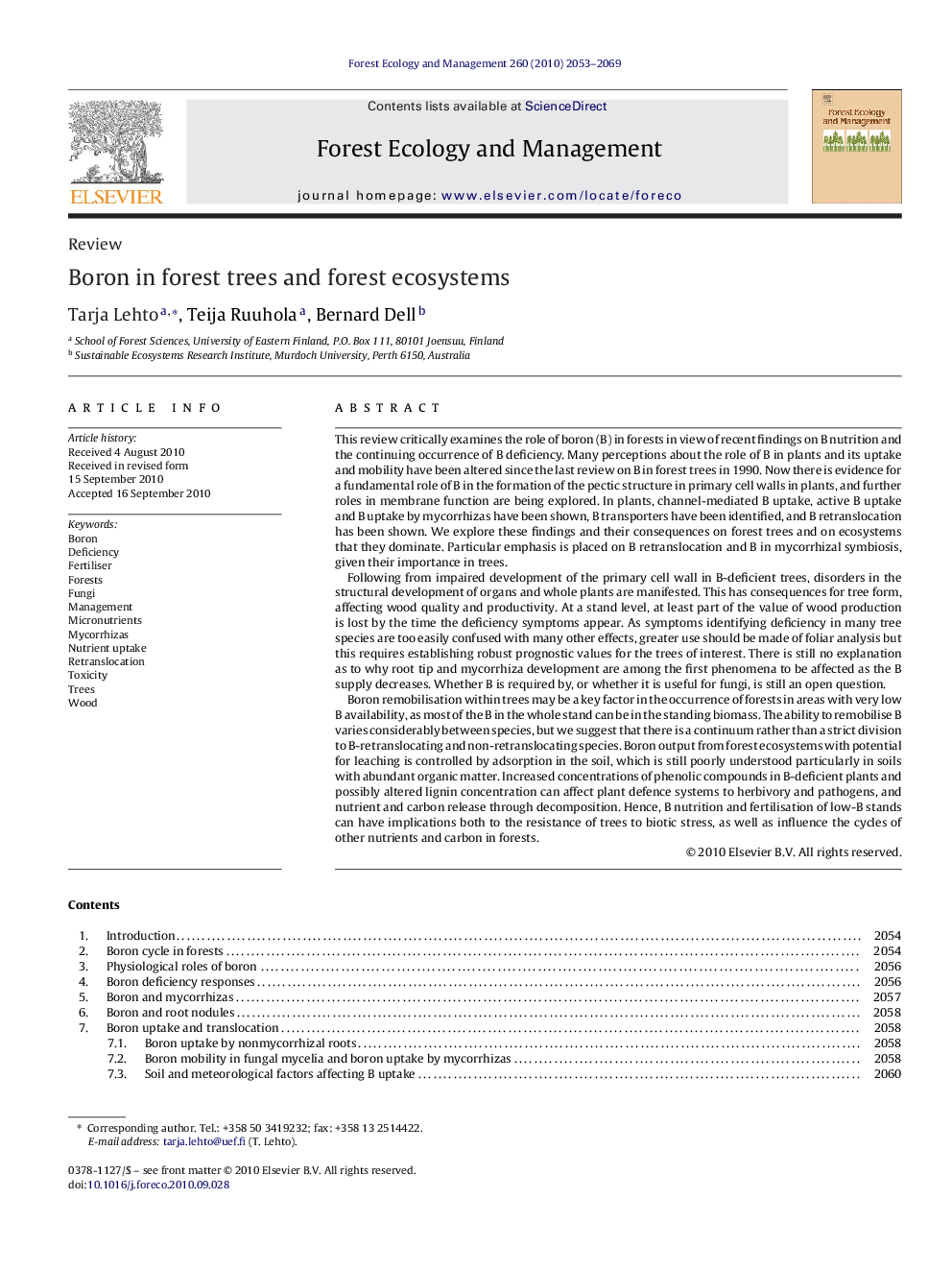| کد مقاله | کد نشریه | سال انتشار | مقاله انگلیسی | نسخه تمام متن |
|---|---|---|---|---|
| 87777 | 159266 | 2010 | 17 صفحه PDF | دانلود رایگان |

This review critically examines the role of boron (B) in forests in view of recent findings on B nutrition and the continuing occurrence of B deficiency. Many perceptions about the role of B in plants and its uptake and mobility have been altered since the last review on B in forest trees in 1990. Now there is evidence for a fundamental role of B in the formation of the pectic structure in primary cell walls in plants, and further roles in membrane function are being explored. In plants, channel-mediated B uptake, active B uptake and B uptake by mycorrhizas have been shown, B transporters have been identified, and B retranslocation has been shown. We explore these findings and their consequences on forest trees and on ecosystems that they dominate. Particular emphasis is placed on B retranslocation and B in mycorrhizal symbiosis, given their importance in trees.Following from impaired development of the primary cell wall in B-deficient trees, disorders in the structural development of organs and whole plants are manifested. This has consequences for tree form, affecting wood quality and productivity. At a stand level, at least part of the value of wood production is lost by the time the deficiency symptoms appear. As symptoms identifying deficiency in many tree species are too easily confused with many other effects, greater use should be made of foliar analysis but this requires establishing robust prognostic values for the trees of interest. There is still no explanation as to why root tip and mycorrhiza development are among the first phenomena to be affected as the B supply decreases. Whether B is required by, or whether it is useful for fungi, is still an open question.Boron remobilisation within trees may be a key factor in the occurrence of forests in areas with very low B availability, as most of the B in the whole stand can be in the standing biomass. The ability to remobilise B varies considerably between species, but we suggest that there is a continuum rather than a strict division to B-retranslocating and non-retranslocating species. Boron output from forest ecosystems with potential for leaching is controlled by adsorption in the soil, which is still poorly understood particularly in soils with abundant organic matter. Increased concentrations of phenolic compounds in B-deficient plants and possibly altered lignin concentration can affect plant defence systems to herbivory and pathogens, and nutrient and carbon release through decomposition. Hence, B nutrition and fertilisation of low-B stands can have implications both to the resistance of trees to biotic stress, as well as influence the cycles of other nutrients and carbon in forests.
Research highlights▶ This review explores new findings on the role and function of B in plants, and their consequences on forest trees and on ecosystems that they dominate. ▶ Boron has a fundamental role in the formation of the pectic structure in primary cell walls, and possibly further roles in membrane function. ▶ Channel-mediated B uptake, active B uptake and B uptake by mycorrhizas have been shown, and B transporters have been identified. ▶ The ability to remobilise B varies considerably between species, but we suggest a continuum rather than a strict division to B-retranslocating and non-retranslocating species. ▶ B nutrition and fertilisation of low-B stands can influence both to the resistance of trees to biotic stress, as well as the cycles of other nutrients and carbon in forests.
Journal: Forest Ecology and Management - Volume 260, Issue 12, 15 December 2010, Pages 2053–2069